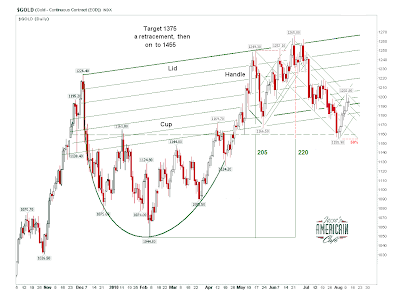"Giving sophisticated models and fast computers to traders is like giving handguns and tequila to teenage boys. Only complete mayhem can result (and as we saw recently, complete mayhem did result)."
Here is a piece I found interesting from a quant who left Goldman Sachs. It matches what I have seen first hand over the years doing business with the brokers and exchanges, and from friends who joined other high energy Wall Street firms including Lehman and Bear Stearns and Morgan Stanley.
The investment banks and brokers are an adolescent culture, high on macho and low on expansiveness in thinking to put it politely.
I do not have a problem with that,
per se. I enjoyed hanging with most of these guys, their odd sense of irreverent cynicism and gallows humour, and the grab-asstic frat life style. It is fun, if you do not take it too seriously. I used to follow an annual race among brokers on the stairs of a large NY skyscraper with interest, a friend phoning in the results. Big money was bet on it. It's a good time, and a means of relieving the tremendous pressures of a high stress profession.
The difficulty is that over the past ten years the financial sector, including the once staid commercial banks, has been absolutely overwhelmed by the hedge fund and investment banking mentality, which in turn has been influencing serious policy discussions in Washington to the detriment of the nation. Most of it had to do with deregulation smearing the boundaries, and opening new opportunities for control frauds through innovation in complexity.
Banks must keep up with their competitors, and if one does it, they all must do it to stay in business. That is why regulation is so vital in this highly competitive sector. One cannot be virtuous as a commercial entity with obligations to shareholders and customers under brothel rules.
Goldman Sachs is primarily a big hedge fund with a lot of political clout and an inside line with the Fed. They have a trading, hedge fund culture these days. It was not always like this. At one time a firm's reputation and their word was everything in a system founded on confidence. With a trading culture it's all about the bottom line, with profit as virtue, and deceit in the name of profit is no vice. You do not wish to have fellows with this mindset running any substantial part of your country.
Quite a bit of that came with their change in status from a predatory trader to mainstream bank in name only, with a predator's instincts and reward system. And this multiplied their potentially negative impact and influence on the entire financial system.
Even worse, their self-centered and short term thinking and clever manipulation of the rules has become the tail wagging the big dog of the country, because the political climate in Washington, and elsewhere, has been largely corrupted by money. And in a bubble economy, the financial centers are where the money is.
Wall Street is like the Gauls (or the Ferengi for the sci-fi fans), ruthlessly obvious and lacking in subtlety, wallowing in the raw and often ostentatious use of amoral power for gain. Washington, on the other hand, tends to effete decadence and studied pretense, the sly and subtle subornation of character and too often the law in the service of power. The mix of these two cultures is an antichrist on the rocks, a deadly cocktail indeed.
I had the opportunity to work with several congressional and even presidential campaigns and administrations starting with Nixon. I don't claim to be an insider, but I have seen a side of things that is transparent to most. I liked that culture as well. I used to go to Washington for the State of the Union message each year, to meet old acquaintances from the Staffs for drinks and chat at Bullfeathers or The Palm to catch up on things, while the big dogs were attending the show. You get the best view of things from the servants, especially if you are benign, an interested non-player.
The deterioration in Washington is evident. These men are not the brightest stars in the firmament, and at times they are downright ignorant of things we might take for granted because they often live a rarefied existence with access to people and information managed by staffs. That is an unfortunate necessity because they are drinking from a firehose of information, and the side effect is a vulnerability to manipulation and well-crafted persuasion.
Their chief ability seems to be to know what to say and to whom, what levers to pull to get something done, making deals, gaining and trading power, and how to get elected. They are great at networking. But this leaves them terribly vulnerable to influence, and group think, and brother, inside the Beltway these days it is all about lawyers, guns (power) and money.
There has always been an element of this, but over the past twenty years, with the whole deregulatory movement, it has become supersized, like a feeding frenzy. I have had the opportunity to discuss this with some older friends in the business and they tend to agree that things have changed.
There are always creepy and seriously warped people who are attracted to the halls of power. I have met a few who were simply chilling. More common are the broken people, with drugs and drink and sex filling the holes in their being, hollowed out by the power and fame that lured them in. But these were always the exceptions.
In government there always had been an element of service to the country and a kind of dignity underpinning the system, a kind of shared camaraderie, that seems to have been tossed in a ditch of expediency and greed, and the lust for power on a mass scale.
What had been the exception is now the rule, at least beneath the urbane, often pietistic, veneer. You can still be tossed out of office in the government for doing things that would still make you a legend on Wall Street.
When the politicos were doing something wrong back then at least they knew it, and they were ashamed of it, despite the usual bluff and bravado. A stiff conversation with a federal prosecutor would make a Congressional staffer's blood run cold. Now it is more like business as usual, and even getting caught is not all that bad, given the current trend to bipartisan professional courtesy, mavericks excepted.
Greed is indeed the greatest good, the fatal flaw behind the decline of the 'me generation.'
The law, that much maligned government of regulations and restraints, abused and fallible as it may sometimes be, is the bulwark of society, and often the only thing standing between the people and packs of ravening wolves.
Those who would tear down the law in some misguided pursuit of reform, or of an adolescent anarchy or utopia of 'no rules' at all, might find it hard to stand when the cold winds of avarice and tyranny of power blow across the land, with no laws to stop or restrain them. The madness serves none, consuming all.
"Equal protection" under the law is the best safeguard that the average person enjoys. Remove the law and you remove the protection, and it is every man for himself, and the individual is irrelevant.
This is why the Banks must be restrained, and the financial system reformed, with balance restored to the economy, before there can be any sustained recovery. And underpinning all of this is the integrity of the regulatory and law enforcement process, and a serious pass at campaign finance reform and limitation of the power of large corporations and organizations to buy influence with other people's money.
The story of the 21st century will be the struggle of the individual versus the organization, the machine controlled by the elite few. A cyclical theme no doubt, but the powerful few seem to become more efficient in their promotion of tyranny on each iteration.
adgrok
Why founding a three-person startup with zero revenue is better than working for Goldman Sachs
By Antonio
23 Jul, 2010
I joined Goldman Sachs in 2005, after five flailing years in a physics Ph.D. program at Berkeley.
The average salary at Goldman Sachs in 2005 was $521,000, and that’s counting each and every trader, salesperson, investment banker, secretary, mail boy, shoe shine, and window cleaner on the payroll. In 2006, it was more like $633,000.
In the summer of 2005, I took one look at my offer letter and the Goldman Sachs logo above it, another look at my sordid grad student pad, and I got on a plane to New York within the week. I packed my copy of Liar’s Poker for reference.
My job on arrival? I was a pricing quant on the Goldman Sachs corporate credit trading desk1. We traded credit-default swaps, both distressed and investment-grade credit, and in the bizarre trading experiment assigned to me, the equity part of the corporate capital structure as well.
There were other characters in this drama. The sales guys were complete tools, with a total IQ, summing over all of them, still safely in the double digits. The traders were crafty and quick-witted, but technically unsophisticated and with the attention span of an ADHD kid hopped up on meth and Jolly Ranchers. And the quants (strategists in Goldman speak)? Mostly failed scientists (like me) who had sold out to the man and suddenly found themselves, after making it through two years of graduate quantum mechanics, with a bat-wielding gorilla peering over their shoulder (that would be the trader) asking them where their risk report was.
Wall Street is inward-looking and all-consuming. There exists nothing beyond the money game, and nothing that can’t be quantified into dollars and cents...
Note to Antonio. I have been where you are now. Watch out for the venture capitalists, and who they attempt to place on your board. They will steal your company and beggar your common shareholders if you allow them, and clap you in financial chains. Keep a close eye on cashflow and burn rates, because if you ever need second tier financing, you're done unless you are very, very lucky. Sandhill Road is the new Tortuga.











































































